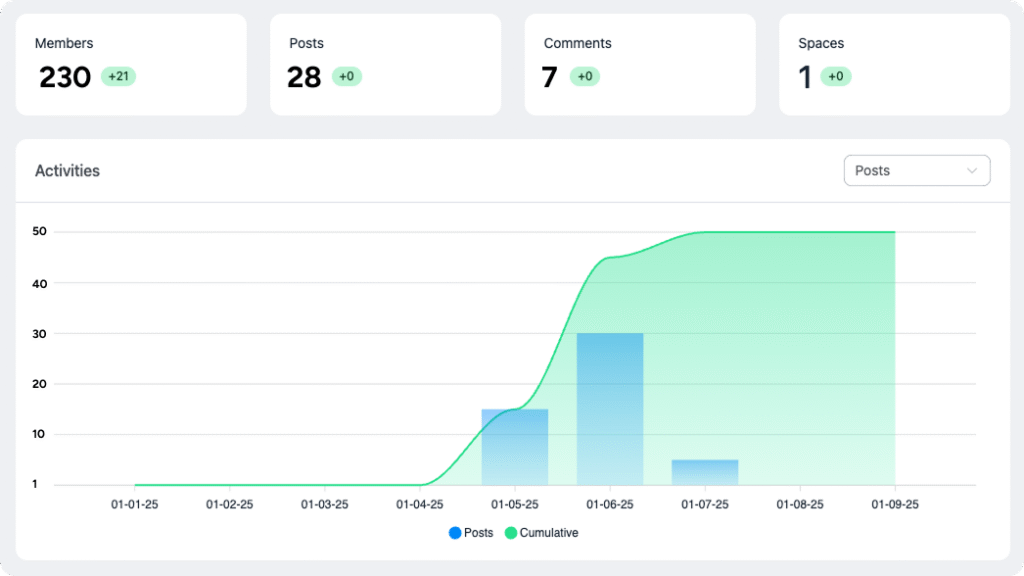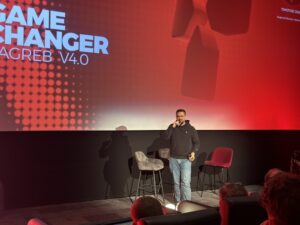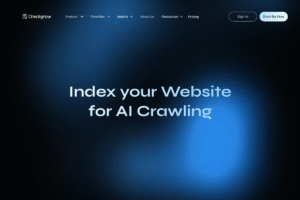Let me start by saying this: I never built a community because I wanted “engagement.”
I built it because I needed connection.
Real, unfiltered, human-to-human exchange.
Back then, I wasn’t chasing a metric. I was chasing a room. A place where founders and business owners could talk, vent, share wins and ideas without putting on the usual LinkedIn performance. I wasn’t building an audience. I was building a table. And I wanted to make sure everyone had a seat.
That mindset made all the difference.
Community Is Not a Feature. It’s Infrastructure.
Most businesses treat community like a bonus. A nice-to-have.
But here’s the truth I’ve learned: community isn’t a feature. It’s infrastructure.
It’s where your customer journey gets rooted. Where relationships take shape. Where feedback flows, support happens, and your brand becomes more than a logo.
And practically? It replaces a ton of scattered systems:
- Email notifications? Built-in.
- Relationship management? Organic.
- Announcements, updates, events? One place.
It becomes your real-time CRM. With context. With emotion. With life.

In just a short span, our experience with Founders.checkgrow.com brought together 230 thoughtful, curious, and driven members, not just users, but real people willing to share, learn, and build alongside each other. What started as a quiet idea became a dynamic space where founders exchange insights, troubleshoot challenges, and celebrate progress. It’s not about volume, it’s about the quality of the room. And this room? It’s full of builders who care.
Check more at: https://founders.checkgrow.com/
The Benefits Are Bigger Than You Think
When done right, community becomes a growth engine. Here’s what I’ve seen first-hand:
- Increased retention: People stay where they feel seen.
- Faster feedback loops: You don’t need surveys when people are already talking.
- Better upsell opportunities: Because you’re not selling. You’re serving.
- Content generation: Members share insights, wins, stories. That’s fuel.
- Stronger brand moat: Competitors can copy your product. Not your people.
- Human SEO: People invite people. The right ones.
- Built-in trust: Conversations build confidence in your service more than any case study can.
How I Got to 300+ Real Members in 2 Months
No ads. No viral hacks.
Just value.
I started small. Direct invites. Personal messages. Handwritten emails. Not mass blasts.
I said:
“Hey, I’m building a space for founders who want to talk real. Not just wins, but worries. Want in?”
The early adopters weren’t passive users. They were active contributors. Some shared product tips. Others posted screenshots of their growth. A few started threads that led to real collabs. It was electric.
What made it work?
- Clarity of purpose: We weren’t trying to be everything to everyone.
- Personal onboarding: I welcomed every new member personally.
- Tooling that helped, not hindered: Circle and FluentCommunity became essential. They made user management simple, messaging intuitive, and structure scalable.
- Consistency: I showed up. Daily. Not as a moderator. As a member.
Community as a CRM (With Soul)
Here’s something nobody talks about:
A good community platform can double as your CRM. But with personality.
You can tag members, segment by interest, send bulk DMs, email everyone, trigger sequences, host events, track contributions.
But it doesn’t feel like CRM software. It feels like hosting a good dinner party.
And when you do it right? People stick around. They talk to each other. They form bonds. And they’re way more likely to:
- Trust your offers
- Refer your product
- Stick through rough updates
- Build partnerships within your ecosystem
It’s the kind of growth you can’t fake.
From Niche to Network
There’s power in going narrow.
I wasn’t trying to reach every business owner on Earth. I wanted the right ones.
People building with integrity. People who cared more about solving than selling. People tired of the hustle-noise and hungry for substance.
That’s the niche.
And once you build that niche? It grows. From trust. From value. From word of mouth.
One founder invites another. One post triggers ten replies. One small ask leads to five collabs.
Tools I Used (And Still Recommend)
Circle: Simple, clean, customizable. Perfect for course creators, coaches, founders.
FluentCommunity: More flexible if you’re building layered spaces with automations.
Both let you:
- Send email broadcasts
- Host private groups
- Track engagement
- Automate workflows
- Assign roles
But the real value isn’t in the tool. It’s in the intention behind it.
Final Thought: Connection Is the Product
Here’s what I believe now, more than ever:
You don’t scale by shouting louder. You scale by listening better.
Community lets you do that. At scale. With heart.
It turns your business from a service into a system of shared growth. It takes your users from customers to collaborators.
And it turns your “brand” into a place people want to come back to.
That’s why community-centric platforms win.
Because at the end of the day, people don’t just want tools. They want to belong.
And if you can offer that?
You’ll never have to chase attention again.






